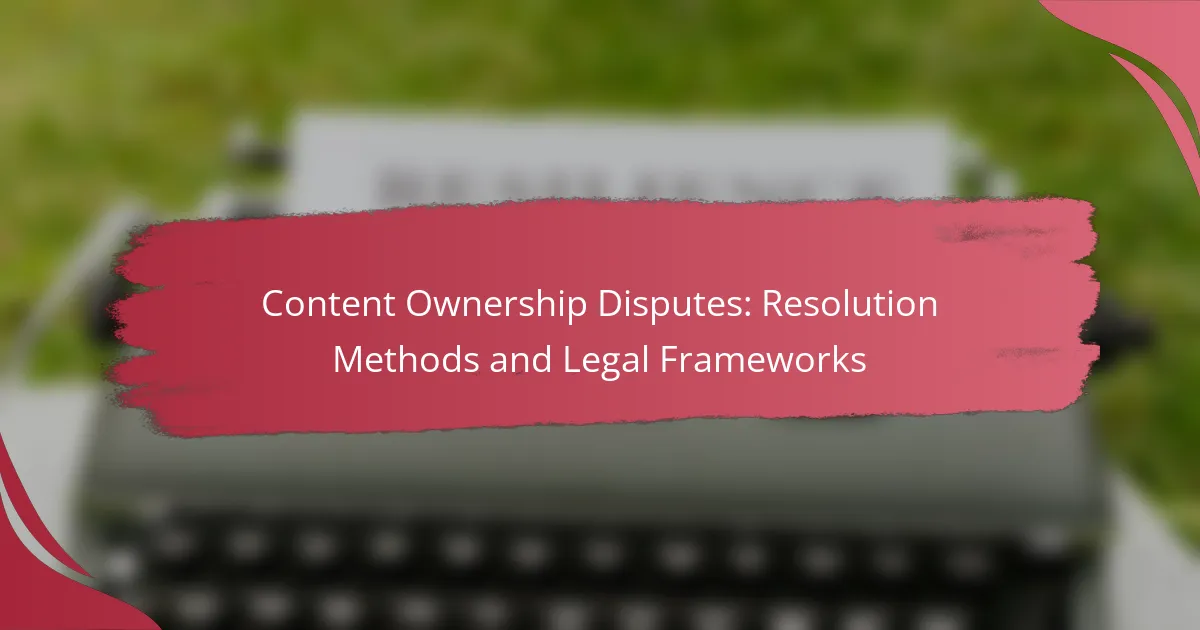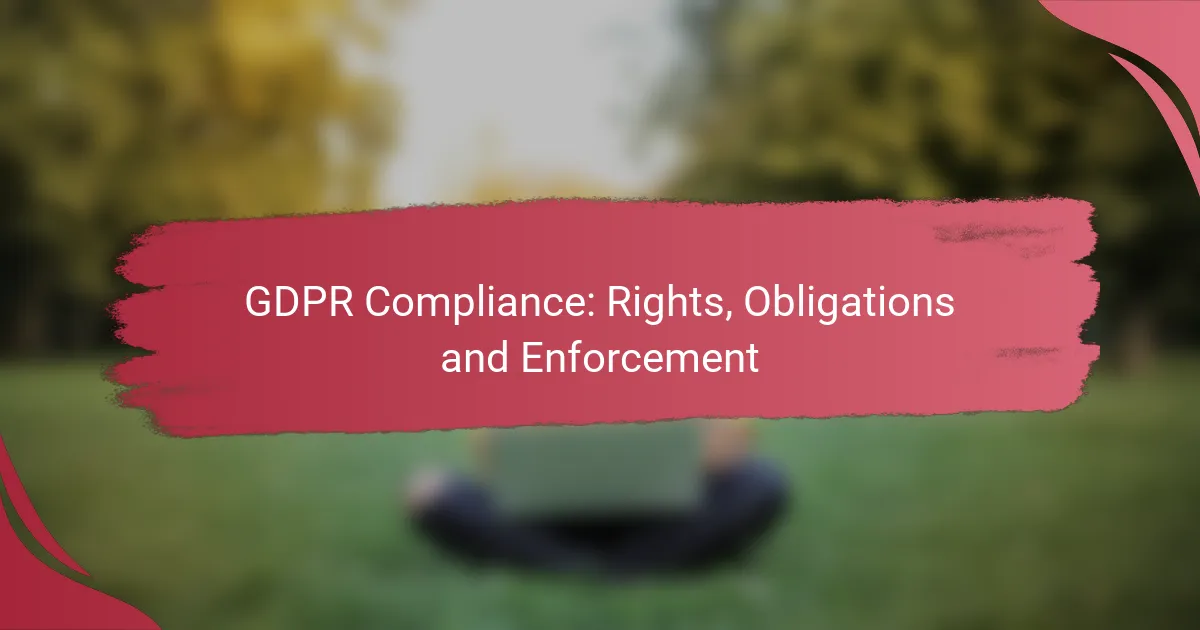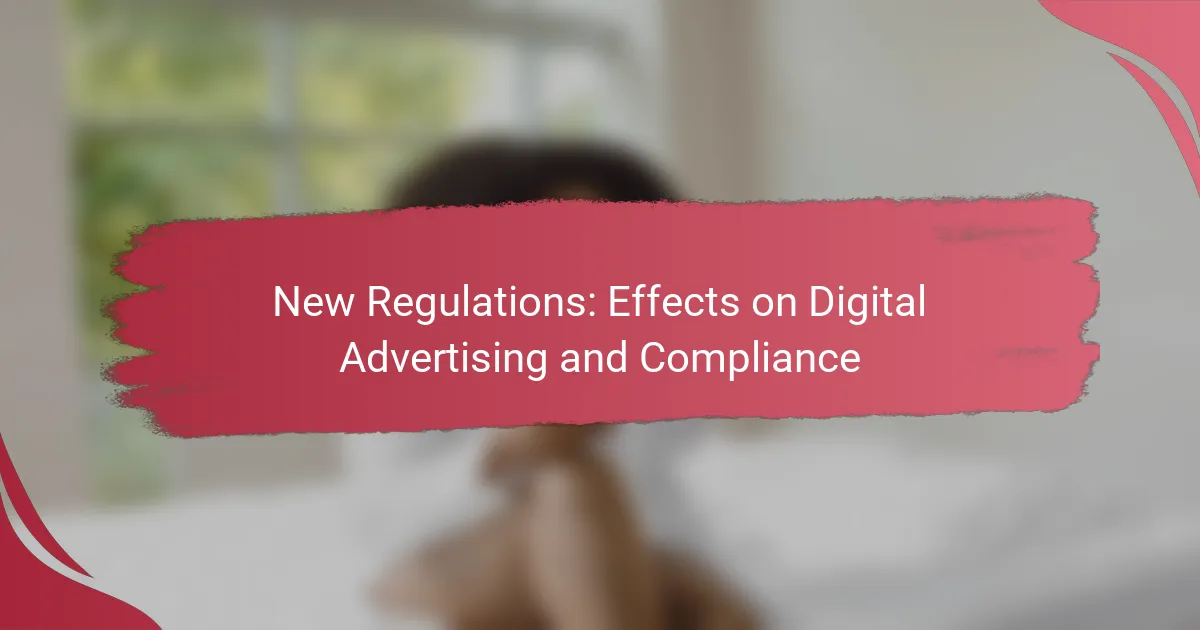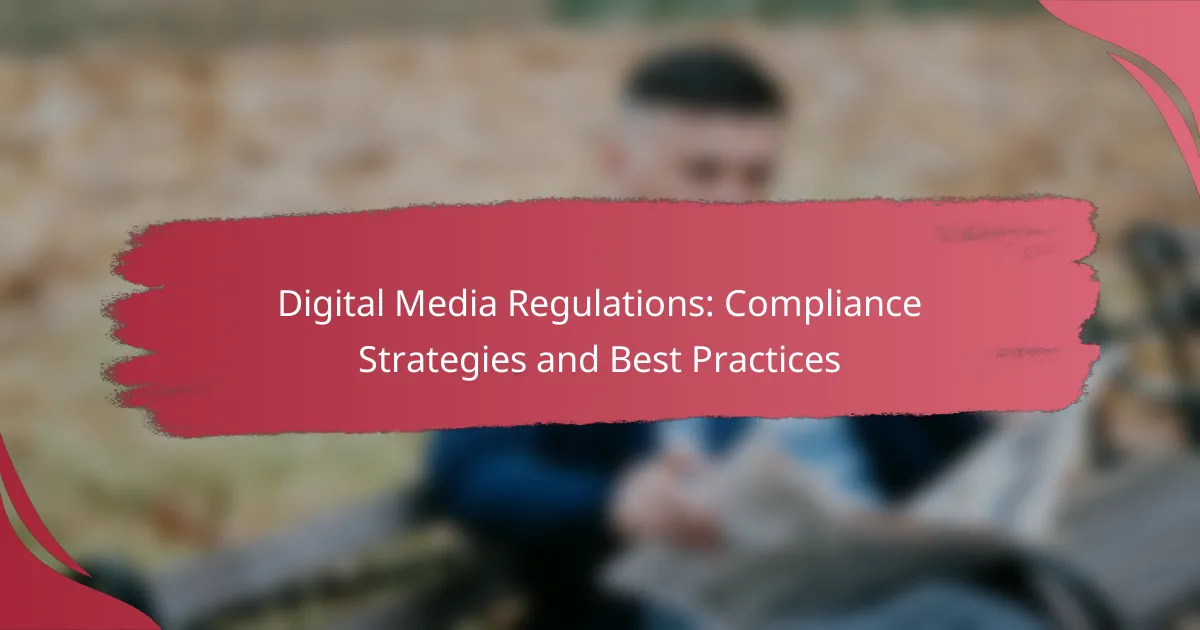Content ownership disputes can arise in various contexts, necessitating effective resolution methods such as mediation, arbitration, and litigation. In the United States, these disputes are primarily governed by copyright, trademark, and contract law, each offering specific protections for creators and businesses. Additionally, international legal frameworks play a vital role in ensuring that intellectual property rights are upheld across borders, providing clarity and security for content creators worldwide.
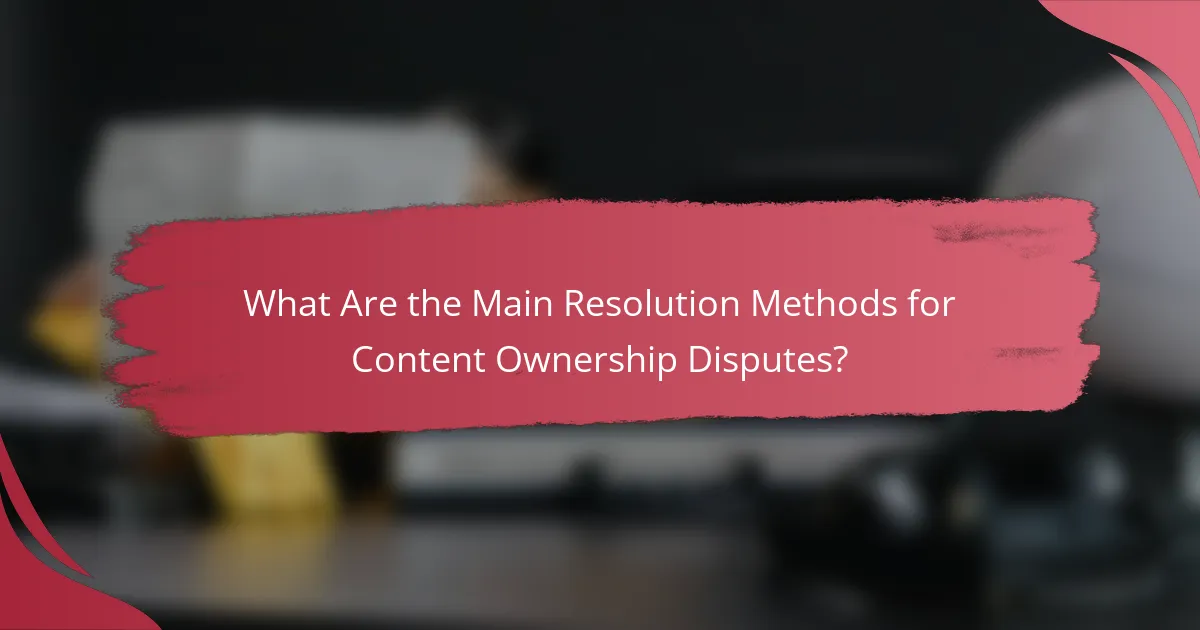
What Are the Main Resolution Methods for Content Ownership Disputes?
The main resolution methods for content ownership disputes include mediation, arbitration, litigation, negotiation, and collaborative law. Each method has unique processes and implications, making it essential to choose the one that best fits the specific circumstances of the dispute.
Mediation
Mediation involves a neutral third party who facilitates discussions between disputing parties to help them reach a mutually acceptable agreement. This method is often less formal and can be quicker than other resolution methods, typically taking a few hours to a couple of days.
One key advantage of mediation is its confidentiality, allowing parties to discuss issues openly without fear of public exposure. However, mediation does not guarantee a resolution, and if an agreement is not reached, parties may need to pursue other methods.
Arbitration
Arbitration is a more formal process where a neutral arbitrator makes a binding decision based on the evidence and arguments presented. This method is often preferred for its efficiency, as arbitration hearings can be scheduled relatively quickly, sometimes within a few months.
Arbitration can be less costly than litigation, but parties must be aware that they typically waive their right to appeal the arbitrator’s decision. Choosing an experienced arbitrator familiar with content ownership issues can significantly impact the outcome.
Litigation
Litigation involves taking a dispute to court, where a judge or jury makes a final ruling. This method can be lengthy and expensive, often taking several months to years to resolve, depending on the complexity of the case.
While litigation provides a formal legal framework and the possibility of appeal, it can also lead to public exposure of sensitive information. Parties should consider the potential costs and time commitments before choosing this route.
Negotiation
Negotiation is a direct discussion between the parties involved, aiming to reach an agreement without third-party intervention. This method allows for flexibility and can be conducted at any time, making it a practical option for resolving disputes quickly.
Successful negotiation often requires good communication skills and a willingness to compromise. Parties should prepare by identifying their priorities and potential concessions to facilitate a productive dialogue.
Collaborative Law
Collaborative law is a process where each party hires their own attorney, and all parties agree to work together to resolve the dispute without going to court. This method emphasizes cooperation and transparency, fostering a more amicable resolution.
Collaborative law can be particularly effective in preserving relationships, as it encourages open communication and mutual respect. However, if the process fails, parties may need to seek litigation, which can be a drawback for some.
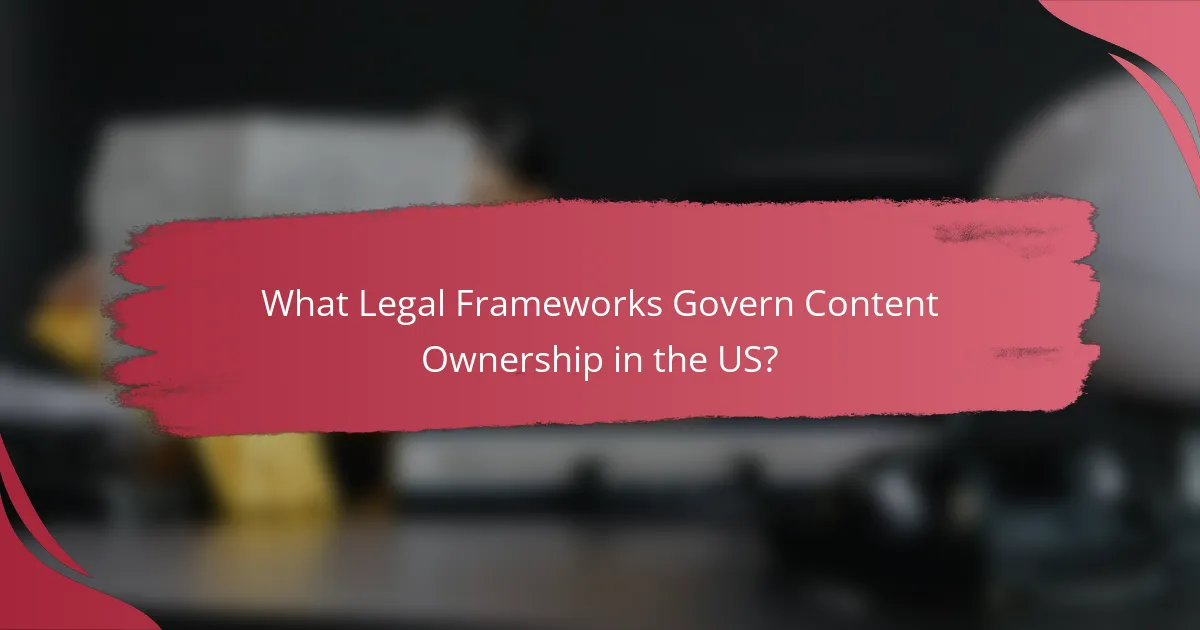
What Legal Frameworks Govern Content Ownership in the US?
In the United States, content ownership is primarily governed by copyright law, trademark law, and contract law. Each of these legal frameworks provides distinct protections and considerations for creators and businesses regarding their content.
Copyright Law
Copyright law protects original works of authorship, including literature, music, and visual arts. Under U.S. law, copyright protection is automatic upon creation, allowing creators to control the reproduction, distribution, and public performance of their works.
Creators should register their works with the U.S. Copyright Office to enhance their ability to enforce rights in court. Registration provides legal advantages, including the ability to seek statutory damages and attorney’s fees in infringement cases.
Trademark Law
Trademark law protects symbols, names, and slogans used to identify goods or services. In the U.S., trademarks must be distinctive and used in commerce to receive protection. This prevents others from using similar marks that could confuse consumers.
Businesses should consider registering trademarks with the United States Patent and Trademark Office (USPTO) to secure exclusive rights and enhance their legal standing. Regular monitoring for potential infringements is crucial to maintaining trademark rights.
Contract Law
Contract law governs agreements between parties regarding content ownership and usage rights. Contracts can specify who owns the content, how it can be used, and any compensation involved. Clear contracts help prevent disputes over ownership and usage rights.
When drafting contracts, include specific terms regarding ownership, licensing, and duration of use. Avoid vague language and ensure all parties understand their rights and obligations to minimize the risk of future conflicts.
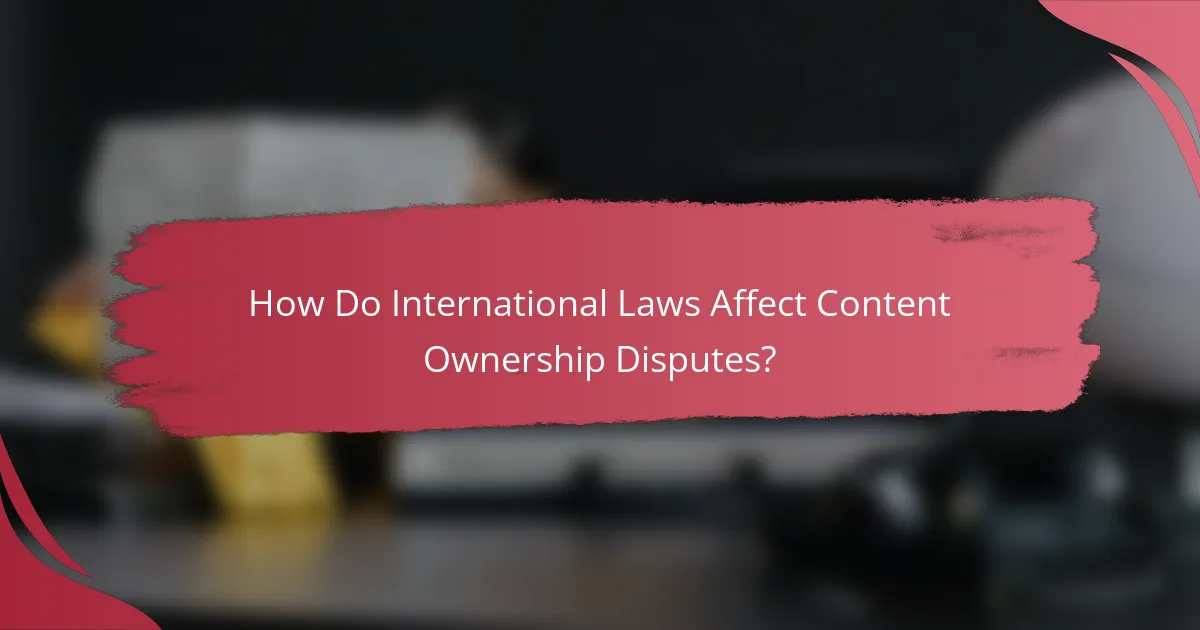
How Do International Laws Affect Content Ownership Disputes?
International laws play a crucial role in resolving content ownership disputes by establishing a framework for copyright protection across borders. These laws help creators and businesses understand their rights and obligations, ensuring that intellectual property is respected globally.
Berne Convention
The Berne Convention is a key international treaty that governs copyright protection. It mandates that member countries recognize the copyright of works from other member states without the need for formal registration. This means that a creator in one country has their rights protected in all other member countries, fostering a more unified approach to content ownership.
One critical aspect of the Berne Convention is the “minimum standards” it sets for copyright duration, which generally lasts for the life of the author plus 50 years, although many countries extend this period. Creators should be aware of these standards to ensure their rights are upheld internationally.
WIPO Treaties
The World Intellectual Property Organization (WIPO) administers several treaties that enhance copyright protection, including the WIPO Copyright Treaty and the WIPO Performances and Phonograms Treaty. These treaties address digital content and provide additional rights to authors and performers, particularly in the digital environment.
For instance, the WIPO Copyright Treaty emphasizes the protection of digital works and the rights of authors to control the distribution of their content online. Understanding these treaties can help creators navigate the complexities of digital content ownership and enforce their rights effectively.
EU Copyright Directive
The EU Copyright Directive aims to harmonize copyright laws across European Union member states, providing a consistent legal framework for content ownership. This directive includes provisions that address the challenges posed by the digital economy, such as the use of online platforms for content distribution.
One notable feature of the directive is the requirement for platforms to obtain licenses for copyrighted content, which can impact how creators monetize their work. Content owners in the EU should familiarize themselves with these regulations to maximize their rights and ensure compliance when distributing their works online.
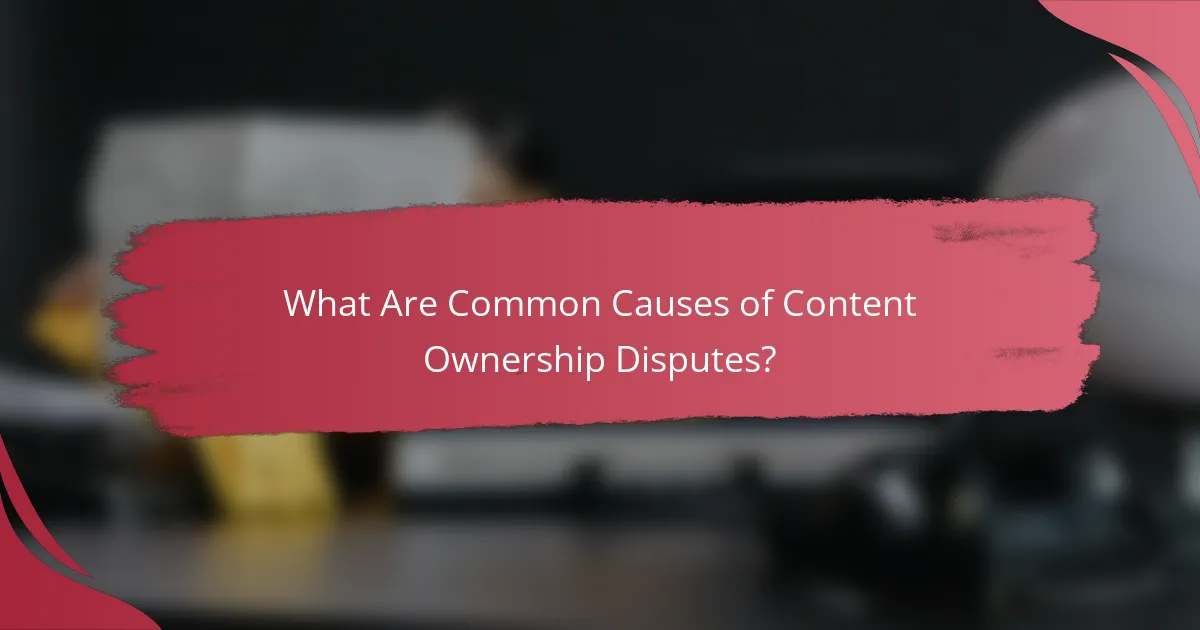
What Are Common Causes of Content Ownership Disputes?
Content ownership disputes often arise from unclear agreements, unauthorized usage, and attribution problems. These issues can lead to legal conflicts and financial losses if not addressed promptly and effectively.
Contract Ambiguities
Contract ambiguities occur when the terms of a content agreement are vague or poorly defined. This can lead to differing interpretations of who owns the rights to the content, especially in collaborative projects or when multiple parties are involved.
To avoid these disputes, ensure that contracts clearly outline ownership rights, usage permissions, and any limitations. Using precise language and defining key terms can help mitigate misunderstandings.
Unauthorized Use
Unauthorized use happens when someone uses content without permission from the rightful owner. This can include reproducing, distributing, or modifying content without consent, leading to potential legal action.
To protect against unauthorized use, content creators should register their work with copyright offices and use watermarks or digital rights management tools. Regular monitoring of content usage online can also help identify infringements early.
Attribution Issues
Attribution issues arise when creators do not receive proper credit for their work. This can occur in various contexts, such as academic publications, online articles, or social media posts, and can diminish the creator’s reputation and financial returns.
To ensure proper attribution, include clear guidelines in contracts about how and where credit should be given. Creators should also communicate their expectations upfront to avoid misunderstandings regarding attribution in any published work.
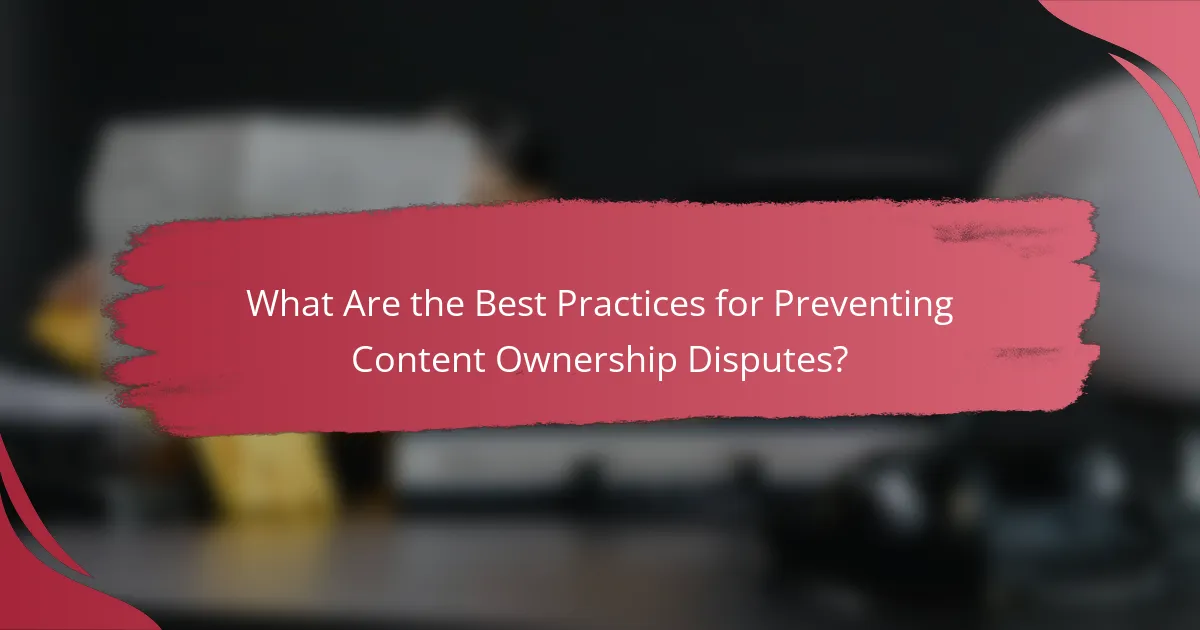
What Are the Best Practices for Preventing Content Ownership Disputes?
To prevent content ownership disputes, it is essential to establish clear agreements, conduct regular audits, and ensure proper attribution. These practices help clarify rights and responsibilities, minimizing the risk of conflicts over content ownership.
Clear Contracts
Creating clear contracts is crucial for defining ownership rights and responsibilities related to content. Contracts should specify who owns the content, how it can be used, and any limitations on its use. Including detailed terms can prevent misunderstandings and disputes down the line.
When drafting contracts, consider including clauses that address copyright, licensing, and termination. For example, specify whether the content creator retains any rights or if all rights are transferred upon payment. This clarity helps both parties understand their obligations and rights.
Regular Audits
Conducting regular audits of content can help identify potential ownership issues before they escalate. These audits should review who created the content, how it has been used, and whether any agreements are in place. This proactive approach can uncover discrepancies and ensure compliance with ownership terms.
Establish a schedule for audits, such as quarterly or biannually, to maintain oversight. During these audits, check for proper documentation and ensure that all content aligns with existing contracts. This practice can significantly reduce the risk of disputes arising from unclear ownership.
Proper Attribution
Proper attribution is essential for respecting the rights of content creators and preventing disputes. Always credit the original author or creator when using their work, as this acknowledges their contribution and helps maintain transparency. Failure to attribute can lead to claims of copyright infringement.
Implement guidelines for attribution within your organization. For instance, specify how to cite sources in written content or how to credit creators in multimedia projects. Consistent attribution practices not only foster goodwill but also protect against potential legal issues related to ownership disputes.
